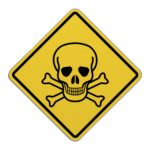Employees slacking off during work hours can be a nightmare for employers. However, one particular boss recently gained notoriety as meme material when he removed chairs from his store in an attempt to “increase productivity.” This drastic action quickly went viral, with a post on the subreddit Anti Work garnering over 30K upvotes. The ensuing discussion shed light on the toxic nature of the workplace and the detrimental effects it can have on employees’ well-being and productivity.

The Chair Debacle: A Symbol of Toxicity

The removal of chairs designated for employee use, leaving only one for the owner with a sign attached, sparked outrage among netizens. The move was seen as a toxic gesture, reflecting the lack of empathy and consideration for employee comfort. This incident highlights the toxic environment that can exist within some workplaces and the negative impact it has on employee morale.
Micromanagement and Lack of Constructive Feedback
A toxic workplace often involves micromanagement and severe criticism without offering constructive feedback. Employees may find themselves subjected to excessive scrutiny and control, hindering their ability to work efficiently and stifling their creativity. This creates an atmosphere of fear and distrust, further exacerbating the toxic nature of the workplace.
Withholding Vital Information and Collaboration

In toxic workplaces, coworkers may refuse to share essential work-related information with others. This lack of collaboration and transparency creates a hostile environment where employees struggle to perform their duties effectively. The resulting silos and communication breakdowns hinder productivity and foster an atmosphere of division and animosity.
Punitive Attitude Towards Mistakes
In a toxic workplace, even minor mistakes can be met with disproportionate punishment. Employees may face public humiliation, verbal abuse, or passive-aggressive behaviour for trivial errors. Such harsh treatment not only damages self-esteem but also creates an environment of fear and anxiety, stifling innovation and growth.
High Turnover as a Warning Sign

A history of high turnover within a team or organisation is a clear red flag of a toxic workplace. If multiple employees have resigned and rumours persist about the struggle to retain members, it is crucial to be vigilant. High turnover often indicates deeper issues within the workplace, including poor management practices, lack of support, and an overall toxic culture.
While leaving a job can be stressful and undesirable, staying in a toxic workplace can have severe consequences for both mental well-being and productivity. It is essential to recognize the signs of toxicity, such as micromanagement, lack of trust, punitive attitudes towards mistakes, and high turnover rates. By acknowledging these red flags, employees can take steps to address the issues or seek opportunities in healthier work environments. Ultimately, fostering a positive and supportive workplace culture is vital for employees to thrive and succeed.
